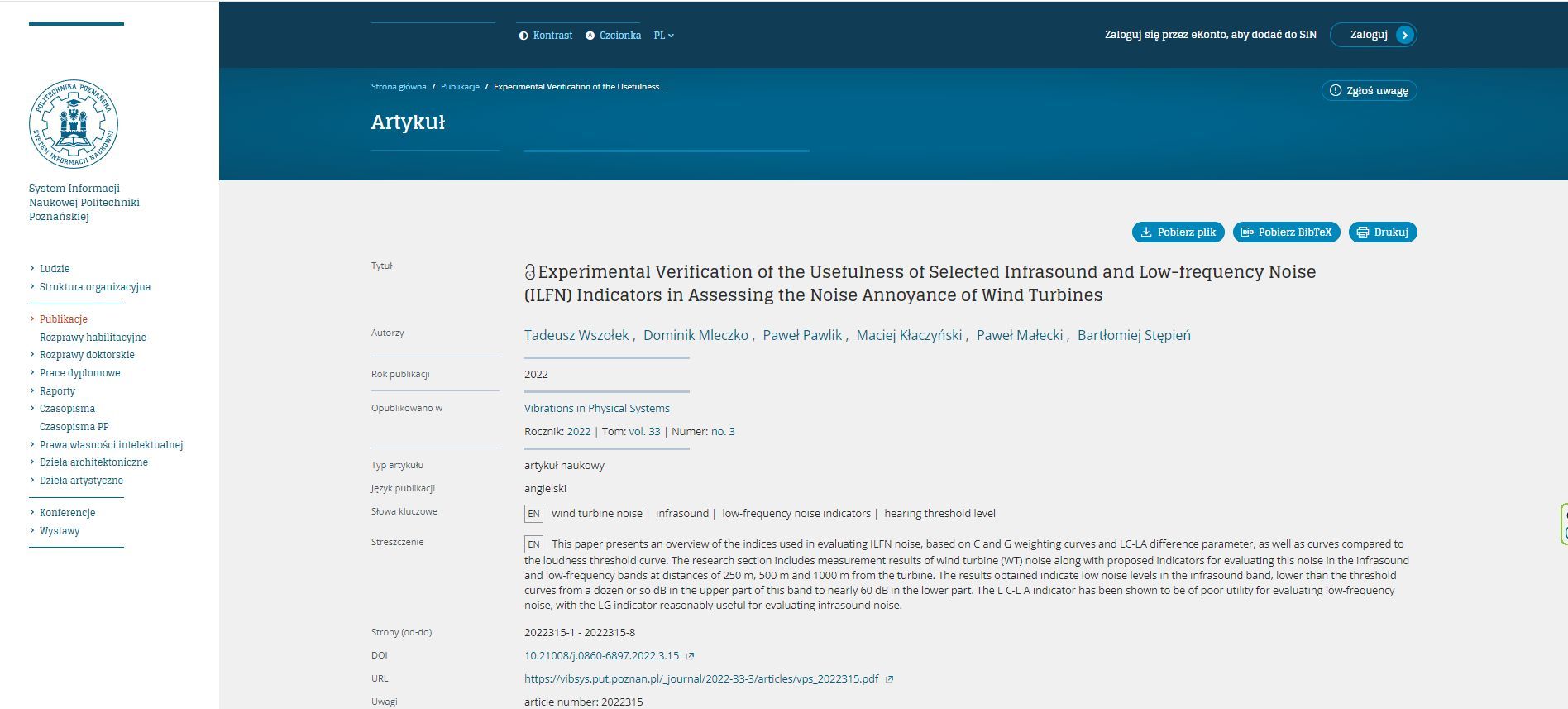10- Comparison analysis of noise generated by wind turbines with the other noise source in outdoor environment13-
The paper presents a comparison analysis of the noise generated by wind turbines and the one generated by a ventilation shaft of a working coal mine. The aim of the research was to compare the frequency and amplitude distribution of those sources, especially in the infra range. The ultimate aim it is evaluate possible environmental impact on human annoyance or severity. During the research noise signals were recorded utilizing low frequency microphones, shielded by windscreens. Microphones were localized at the heights of 0.0 m, 1.5 m (approximate location of a human ear in a standing position) and 4 m. Additionally, a measurement position of a microphone in relation to the ground surface was observed. Measurements at ground level were performed according to the standard PN-EN 61400-11:2013-07 and in vertical position, where the microphone was mounted „upside down” with the grid flush with the board. The possible influence of wind speed was also monitored. The results of the measurements are discussed.


